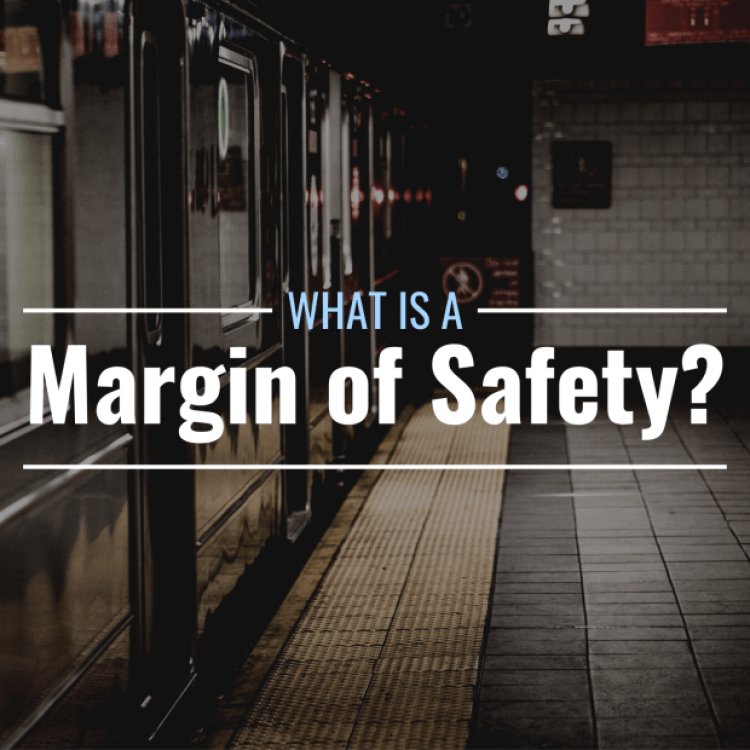What Is a Margin of Safety in Investing? How Does It Work?
What Does “Margin of Safety” Mean in Investing?Stocks fluctuate in price constantly, and longer-term investors aim to take advantage of these fluctuations by buying stocks when they’re “on sale,” or trading for less than they’re worth. In value-investor-speak, the price a stock should be trading at ...


What Does “Margin of Safety” Mean in Investing?
Stocks fluctuate in price constantly, and longer-term investors aim to take advantage of these fluctuations by buying stocks when they’re “on sale,” or trading for less than they’re worth. In value-investor-speak, the price a stock should be trading at is known as its “intrinsic value.”
When a stock is trading below its true worth, the difference between its current market price and its intrinsic value is known as a margin of safety. All value investors aim to buy stocks that are trading below their intrinsic value, but different value investors have different risk tolerances.
Each investor can set their own margin of safety. For example, a very risk-averse investor might only consider buying stocks that are trading 30% or more below their intrinsic value, while a less risk-averse investor might be willing to buy anything that’s trading 10% or more below its intrinsic value.
How Does Margin of Safety Investing Work?
Using a margin-of-safety strategy serves two main purposes:
- First, it primes an investor’s portfolio for gains. Assuming an undervalued stock’s price will eventually trend toward its intrinsic value over time as the market recognizes its worth, only buying that stock when it is heavily discounted creates the potential for larger gains if and when the stock does approach, meet, or exceed its true value.
- Second, it provides downside protection. All stocks have the potential to lose value, but the less a stock was purchased for, the less value it stands to lose. Someone who bought a stock at 10% below its intrinsic value, for instance, would lose more money than someone who bought the same stock at 30% below its intrinsic value should the stock’s price fall. The lower an investor’s entry price into a stock, the less risk they are taking on.
What Sorts of Investors Should Use a Margin of Safety?
Because it can take a while—sometimes years—for an undervalued stock to rise in price to its intrinsic value, using a margin of safety protocol (and practicing value investing in general) is a good strategy for long-term investors. Investors with time horizons of at least several years and whose portfolio goals include long-term growth are good candidates for a margin-of-safety-based investment strategy.
On the other hand, intrinsic value is far less important to shorter-term traders who buy and sell stocks on a weekly, daily, or hourly basis. Instead, traders like this make buy and sell decisions based on market sentiment, news, and technical indicators.
Margin of Safety Example
Let’s say a value investor decided to set their margin of safety at 20%. This means they only buy stocks that are trading at 20% or more below their intrinsic value.
Stock A is trading at $92 and has an intrinsic value of $70.
Stock B is trading at $35 and has an intrinsic value of $29.
Stock C is trading at $109 and has an intrinsic value of $81.
In order to decide which stocks to buy and which to keep watching, the investor could calculate how discounted each stock is.
Discount = (Market Price – Intrinsic Value) / Market Price
Stock A
Discount = ($92 – $70) / $92
Discount = $22 / $92
Discount = 0.239 = 23.9%
Stock B
Discount = ($35 – $29) / $35
Discount = $6 / $35
Discount = 0.171 = 17.1%
Stock C
Discount = ($109 – $81) / $109
Discount = $28 / $109
Discount = 0.256 = 25.6%
So, since only Stocks A and C are discounted more than 20%, the investor would buy both of them and refrain from buying Stock B because it is only discounted by 17%.
How Do You Calculate a Stock’s Intrinsic Value?
The term “intrinsic value” sort of implies that any given stock does have a true value at any given time, and margin-of-safety investing assumes that this mythical price can be figured out. In reality, things aren’t so simple.
Intrinsic value is, at best, an estimation of a stock’s worth, and different value investors have different methods of calculating a stock’s intrinsic value. In general, however, value investors use a stock’s fundamentals to figure out what they think it is worth. This can include quantitative fundamentals like debt-to-equity and price-to-earnings ratios, as well as qualitative fundamentals like management skill, strategic advantage, and opportunities for growth.
Additionally, some investors use established formulas to calculate the supposed intrinsic value of a stock. Two of the most popular formulas are the discounted cash flow model and the dividend discount model.
Who Came Up With the Margin of Safety Strategy?
The concept of a margin of safety in investing was first discussed by Benjamin Graham, who has been called the “father” of value investing. He is best known for his book, The Intelligent Investor, which provided the foundational concepts used by value investors today. Warren Buffet, perhaps the best-known investor of all time, further popularized the margin-of-safety approach, famously using a 50% discount from intrinsic value to set his price target for some stock purchases.
What's Your Reaction?

























































